Murujuga Rock Art & Cultural Experience
Tour itinerary.
Tours start at 8am in the car park of Nganjarli (previously known as Deep Gorge) in the Murujuga National Park.
You will have to drive yourself to the national park. Allow 30 minutes from Karratha.
We will be walking through the park to access the significant rock art and you will take part in a Welcome to Country with a traditional calling out to the ancestors.
Your guide will explain the uses of the local plants, bush tucker and bush medicine and how the animals and plants play a large part in daily life. See and feel the different rock tools used. Hear the creation stories and how the rock carvings were made and stories describing their significance.
The tour will run for up to 1.5hours, walking outside on newly constructed footpaths and ramps, so be sure to wear suitable shoes, a hat, suncream and bring some water. Disabled access is available throughout the duration of the tour.
There is plenty of time to ask questions and learn more about the culture and history of the rock art and aboriginal heritage throughout the tour.
The tour will conclude back at the car park at 9.30am.

About our guides
The Traditional Owner groups of the Burrup Peninsula and surrounding areas are pleased to showcase their culture and extensive Rock Art petroglyphs. Murujuga Rangers will give you the opportunity to experience not just the ancient rock carvings but also their stories and explain how they lived in harmony with the land through their bush tucker and medicine interpretation.
Your tour guides will ensure that your Murujuga Rock Art and Cultural Experience will provide you with accurate and culturally appropriate information, developed under the guidance of the Circle of Elders. The guides will also explain the Galharra, their kinship system, how it not only governs their family relationships but gives them a connection to the country.
This 90-minute tour will provide an insight into an ancient culture and greatly enhance your Murujuga National Park Experience. With the World Heritage nomination process underway, this site is not just of national but international significance. The guidance and knowledge of the Rangers will ensure that you really appreciate the Nganjarli
Petroglyphs and understand their connection to culture.
Murujuga National Park covers an area of 5,134 ha and is located on the Burrup Peninsula near Dampier. The area is considered to host the largest concentration of ancient rock art in the world, dating back more than 50,000 years. The word Murujuga meaning ‘hipbone sticking out’, referring to the peninsula’s alignment on the Pilbara coast.
The Murujuga National Park is the 100th park in WA. It is here you find the famed petroglyphs or ancient rock art of c ultural significance to the people of Murujuga and experts alike. It commands the attention of researchers and archaeologists.
Important things to remember
If you are planning to visit Murujuga, please take time to understand our cultural safety protocols first. Some general rules for cultural safety on Murujuga are listed below - other protocols are dependent on the commercial, research or other activities undertaken. Please ask our Rangers or contact MAC to find out more if you have another questions before visiting Murujuga.
DO NOT remove anything from the country, including stones, shells, artefacts or any other items, as this bring bad luck, sickness or tragedy.
DO NOT climb onto rocks or pass into sacred areas.
DO NOT photograph or share images of rock art depicting faces or humanoid figures.
RESPECT our protocols about gender specific sites (women or men-only places).
DO NOT destroy Aboriginal sites. It is illegal and penalties apply including fines and imprisonment.
DO NOT conduct earthworks without the express permission from Murujuga Aboriginal Corporation (MAC) and the Murujuga Circle of Elders.
Further information on cultural safety can be found in the publication: Murujuga Cultural Management Plan: Ngaayintharri Gumawarni Ngurrangga, available at MAC.
Tours take place Tuesdays and Thursdays
Starting at 8am , tour prices.
Adults $75
Concession $55
Children $35
Family (2 adults, 2 children) $185
Tour Duration - 1.5hours
Meet at the car park at Nganjarli in the Murujuga National Park.
Entrance to National Park is on the Hearsons Cove Road, Burrup Peninsula.
Cultural Awareness Training takes place on Wednesdays only.
Allow 30 minutes to drive from Karratha.
Bookings are essential.

Experience Murujuga

- Conferences
- Dive Course & Tours
- Karratha Kite School
BOOK DIRECT AND SAVE
WE ARE OPEN FOR BUSINESS.
When guests arrive, please respect procedures we’ve put in place to guarantee your safety and that of our staff and other guests.
ROCK ART ACROSS THE BURRUP PENINSULA
Rock art- deep gorge, view map, travel time: 26 min distance: 28 km.
Deep Gorge, situated on the Burrup Peninsula , is a wonderful natural record of Aboriginal culture. This area is recognised as one of the most prolific Aboriginal rock art sites in Australia. Over 10,000 individual rock engravings (petroglyphs) and etchings have been located in this archaeologically rich region. The collection of rock engravings number over one million across the Dampier Archipelago and Burrup Peninsula, many depicting images of the now extinct Thylacine (Tasmanian Tiger). Prepare to be taken back in time as you leave the main road, along a 100 metre track to the car park and walk along the dry creek of this amazing gorge.
As you venture down the creek at Deep Gorge, surrounded by huge granite boulders and Currajong trees, marvel at the petroglyphs etched into the rocks, and gain an appreciation of the Jaburara Tribe’s self sufficient lifestyle. Shell middens provide evidence of their seafood diets; the granite boulders would have offered shelter from the harsh weather conditions; and the creek, now mostly dry, would have been their only water supply.
After discovering ancient Aboriginal culture at Deep Gorge, why not visit Hearson’s Cove, one of WA’s most beautiful beaches (only 100m past the turnoff to Deep Gorge).
Rock Art Tours
Take a guided tour with Clinton from Ngurrangga Tours as you travel through the Murujuga National Park. With the highest concentration of rock art in the world, rediscover the petroglyphs (rock art) created by the Yaburrara (Northern Ngarluma) people. The rock art has been dated back to before the ice age ended and is approx. over 40,000 years old and there is up to 1 million rock art images scattered across the entire Burrup Peninsula and Dampier Archipelago.
Contact Ngurrangga Tours - 42 Roe Street Roebourne WA 6718 Australia or telephone them on +61 (08) 9182 1777.
Email: [email protected]
Murujuga Rock Art Cultural Experience - Join the traditional custodians on a 1.5hour rock art tour and cultural experience at Deep Gorge in the Murujuga National Park on the Burrup Peninsula, 30 minutes from Karratha. Hear the stories, experience the culture.
Daily from 9am - Booking essential. Frequency of departures may vary due to demand, weather and cultural obligations. www.experiencemurujuga.com.au or www.karrathavisitorcentre.com.au
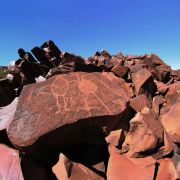
1300 639 320
Lot 1090 De Witt Road, Karratha, WA 6714
PO Box 1660, Karratha, WA 6714
Join us online
Terms & Conditions
Credit Card Form

© Copyright The Ranges Karratha 2024, Web by Two Moons
You are using an outdated browser. Please upgrade your browser to improve your experience.
Murujuga Rock Art & Cultural Experience
Things to do burrup , karratha , western australia.
Join Traditional Custodians on a 1.5hour rock art and cultural experience at Nganjarli (previously known as Deep Gorge).
To the local Indigenous people, Murujuga is a sacred place where you will find the famed petroglyphs, ancient rock art of cultural significance.
There is estimated to be up to one million images, some more than 35,000 years old, found in the National Park. The rock art tells the stories of our country and our intrinsic link to it.
As the indigenous custodians of this land, we want to share our culture and stories with you.
Nearby Things to Do
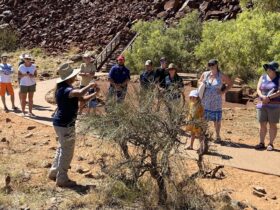
Burrup, Karratha
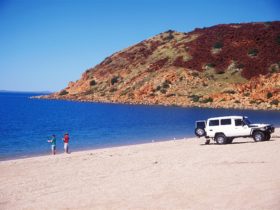
Hearson’s Cove
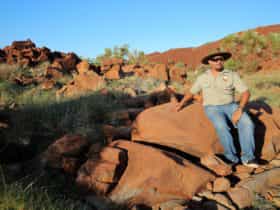
Burrup Peninsula
Dampier, Karratha
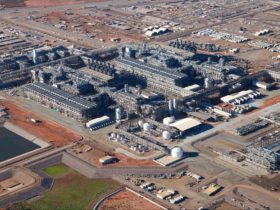
North West Shelf Project Visitors Centre
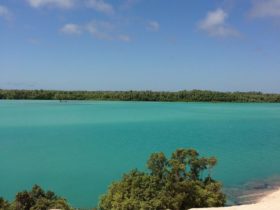
Also In This Location
- Accommodation
Your browser is a-n-c-i-e-n-t! Upgrade to a different browser or install Google Chrome Frame to experience this site.
There are currently no items in your cart.
Rock Art Tour - Yaburrara
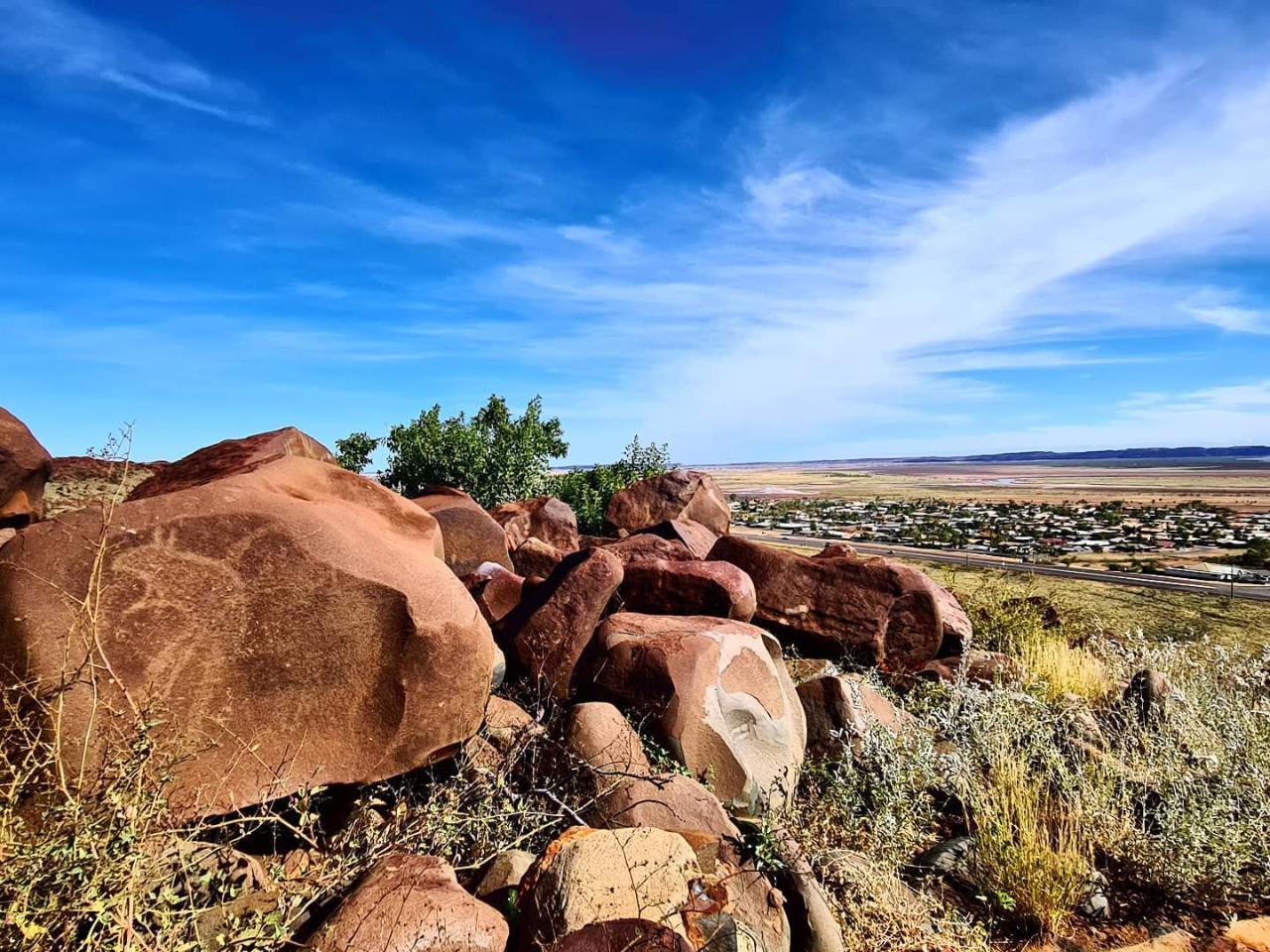
- Duration: 2 Hours (approx.)
- Product code: PCLKUP
Take a guided tour with a traditional owner along a section of the Yaburrara Trail and rediscover the petroglyphs (rock art) created by the Yaburrara (Northern Ngarluma) people. The ridge is rich with petroglyphs dating back over 6,000 year.
Tour Highlights:
- Traditional Welcome to Country
- Ancient Aboriginal Rock Art
- Sacred Sites
- Traditional Stories
- Shell Middens
- Amazing vista views of Karratha and Nickol Bay
DISCLAIMER:
We require a minimum of 4 bookings, or the cost thereof, for a booking to proceed. If the tour doesn’t proceed due to numbers not being met, you will receive a full refund, or you can choose to transfer your booking to another day. Child rate: 6 – 16 yrs Children under 6 FOC Family: 2 Adults, 2 Children Concession: Concession fares for individual guests do not apply to international travelers and group tour participants. Concession fares may apply to holders of Australian Senior Cards, Australian Pensioner Cards and full‐time students studying in Australia. National Park fees included Tours run April - October on scheduled dates. Numbers below min or above maximum numbers subject to availability and arrangement.
Start Booking Now
Please enable cookies in your browser to place a booking how do I enable cookies?
Enter Number of Participants *
Choose a date *, choose a time *.

Booking Software for Guided Tours by Rezdy.com | Agent login
- Membership & Benefits
- Discounts and special offers
- Competitions
- Become a member
- Have your say
- About your membership
- Change my details
- Pay or renew
- Member News blog
- Online shop
- Log into myRAC
- myRAC Frequently Asked Questions
- 5%* off purchases in-store and online
- Savings on gas for your home
- Save 4 cents per litre off fuel
- Car & Motoring
- Roadside Assistance
- Car insurance
- Caravan loans
- Motoring for businesses
- Motorcycle insurance
- Caravan & trailer insurance
- Car servicing & repairs
- Car Buying Service
- Electric vehicle products and services
- Electric SUVs available in Australia 2023
- WA's cheapest cars to own and run
- Some of the best cars for towing
- Home & Life
- Home insurance
- Boat insurance
- Life insurance
- Health insurance
- Home security
- Investments
- Personal loans
- Pet insurance
- Small business insurance
- Home services
- Pre-purchase building inspection benefits
- Learn to save a life in 30 minutes
- How secure is your home?
- Travel & Touring
- Our holiday parks & resorts
- Find a travel centre
- Travel & cruise deals
- Travel insurance
- Car hire & driving holidays
- WA holidays
- International driver’s permits
Cruise packages
- WA’s best road trips and long distance drives
- Endless things to see and do in Perth and WA
- WA’s top destinations and places worth visiting
The North West's precious rock art
Travel & Touring | WA Things To Do
20 January, 2019 By: Wendy Caccetta
Long before England's prehistoric landmark Stonehenge went up or work began on Egypt's famous Pyramids, Aboriginal artists were recording history in the rocks of WA's North West.
When Australia's first artists began carving and painting images in rock at least 50,000 years ago, giant animals were still walking the continent. The artists recorded creation stories and captured images of the wildlife around them and as the centuries passed, their descendants continued to document a changing world.
Today, their work strikes awe in many visitors who visit ancient sites across northern Western Australia, where the history is literally part of the landscape. One location, Murujuga, or the Burrup Peninsula, has more rock art at the one site than any other place in the world and could soon take its place alongside the great cultural treasures of all time.
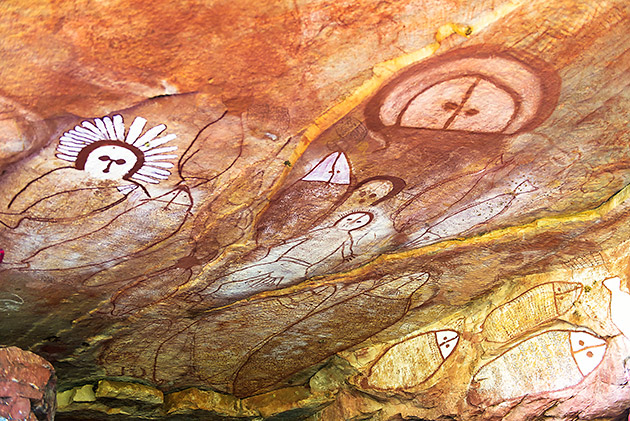
"It's older than the pyramids. It's older than the Great Wall of China," says Peter Jeffries, who represents the custodians of Murujuga, five Aboriginal language groups who have come together in the Murujuga Aboriginal Corporation.
"You can see from people's understanding of these significant sites around the world that in comparison, the period of time (they have existed) is miniscule."
Rock art across the Kimberley and Pilbara number in the millions. They are painted or etched in the country from caves to gorges and rock faces, and some are among the oldest in the world.
This massive outdoor gallery provides an insight into the changing lives of its Aboriginal inhabitants reaching back to the Pleistocene era, according to science, and to when the world began, according to Aboriginal mythologies.
At Murujuga, about 35km from Karratha in the Pilbara, there are millions of engraved rock art images. The Aboriginal custodians and WA Government hope the area will be listed as a World Heritage site with UNESCO for its cultural value.
It would place Murujuga alongside the Acropolis in Athens, The Taj Mahal in India, Stonehenge in the UK, The Great Wall of China and the Pyramids of Giza.
Viewing a major masterpiece
Professor Jo McDonald, an archaeologist and director of the Centre for Rock Art Research and Management at the University of WA, says viewing rock art beats that of any indoor gallery.
Given the choice of seeing Leonardo Da Vinci's 517 year old masterpiece the Mona Lisa in the Louvre in Paris or rock art in WA's majestic north, she doesn't hesitate.
"Definitely the rock art," she says. "Having been to see the Mona Lisa it's a bit underwhelming by comparison."
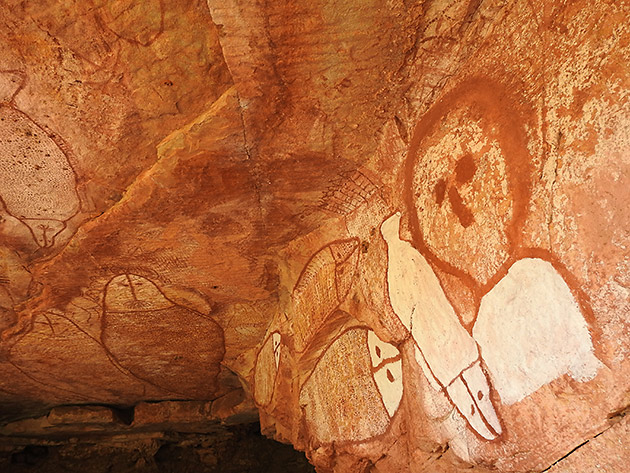
"You can get extraordinary feelings looking at rock art on country because it provides such an extraordinary insight into what the artists must have been thinking and what they were interested in around them.
"Certainly, as an archaeologist and someone who loves being on country, I find being in a rock art site significantly more spiritually rewarding than standing in a queue in one of the French or European art galleries."
Timeless style
The rock art of the Kimberley region has been classified into styles. One of the oldest is the long and intricate Gwion Gwion while more recent Wandjina spirit paintings have been dated back 4000 years.
Isobel Peters, a matriarch of the Arraluli clan of the Worrorra tribe, says visitors to her traditional lands in the Kimberley are particularly curious about the Wandjinas.
She runs tour company Wijingarra with two of her children and other family members, meeting cruise guests from tour companies that have permission to visit Numbree (Raft Point), Wijingarra Butt Butt (Freshwater Cove) and Langii, which are part of Arraluli lands.
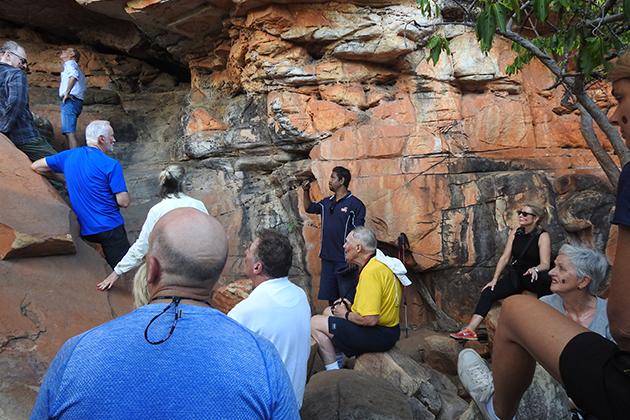
"The caves have examples of old paintings of the Guyon or Gwion figures, great examples of our cultural stories and characters, our gi (totems), and of course the Wandjina."
Peters says they have learned how to sensitively share knowledge that many years ago wasn't shared outside the tribe.
"Many visitors want to come and see the Wandjinas, which you can only find in the Kimberley," she says. "These are very sacred places for my people. Many things could go wrong for us if we did not observe the laws of the Wandjina the right way.
"We are still very sensitive about these places today and ask that people have the same respect as they would in a church or other sacred place when visiting here."
Enjoying this article? Check out:
6 unforgettable station stays in WA » Bucket list Indigenous tours in the Kimberley » 10 useful apps for WA travel »
Preserved in rock
Professor McDonald says Australia's earliest artists worked with a full palette of natural colours. Pigments were made from natural materials and they painted with brushes made from plants and with their hands.
"In the Kimberley, scientists at Melbourne University discovered the geology and the chemistry of the rock is such that the pigment has penetrated the rock and actually become part of it, which means it is there forever."
At Murujuga in the Pilbara, rock art images were carved with stone tools. Faces are among the earliest engravings. Others depict animals, some extinct such as giant fat-tailed kangaroos and thylacines, and sea life such as sharks, whales and stingrays.
Peter Jeffries says the art was a way for the ancestors of the Ngarluma, Mardudhunera, Yaburara, Yindjibarndi and the Wong-Goo-Tt-Oo peoples to pass on culture.
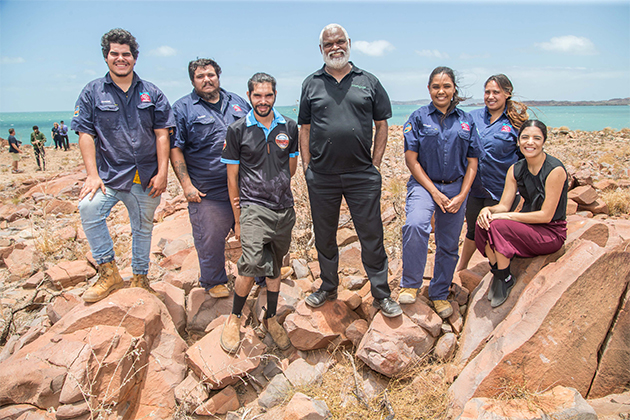
"They include what we saw out on the country over a fairly long period of time," he says. "Then we have art that could be seen as a constant reminder of our creation stories about our creator and how our creator came and created everything as we know it.
"He also gave responsibilities to spirits that lived and co-exited with us in the Dreamtime when all the stories came about."
Jeffries says the faces are warnings telling people not to go past that point.
Rock art tours
Mowanjum Aboriginal Art and Culture Centre, a hub for the Worrorra, Ngarinyin and Wunumbal tribes near Derby and a popular spot for people travelling the Gibb River Road, will this year open an interactive cave museum to help visitors understand rock art.
Tours also take in rock art from land, sea and air. There are many self-drive options too.
By air, Jilinya Adventures, owned and run by Francis Woolagoodja and his Uncle Donny Woolagoodja, a Worrorra elder, offers rock art experiences such as a Rock Art by Air tour from Derby from April. The company is also this year planning to run air tours from Broome. Check their website for 2020 prices.
From the water, many Kimberley cruises work with traditional guides to include rock art in their itineraries, such as APT's Grand Kimberley Coast cruise between Broome and Kununurra which runs from May to September.
On land, Karratha is a base for visiting Murujuga where traditional rangers conduct 90-minute rock art and cultural tours from Deep Gorge two days a week. Cost is $35 for adults, $29 concession, $17 for children and family packages are $89.
A new 1.5km boardwalk is due to open at Murujuga this year, making the area more accessible for all visitors.
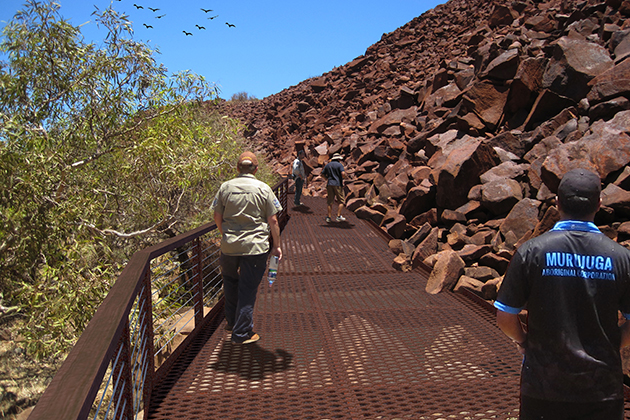
Places such as Munurru on the Mitchell Plateau in the Kimberley, which has Wandjina and Gwion Gwion art, has campgrounds open from May to October. Camping fees are payable to the Wunambal Gaambera people, whose rangers also run host tours. Visitor passes are needed and available here .
Aboriginal elders from the Wunambal Gaambera and Dambimangari people have also published a book, We Are Coming to See You , to tell the stories of the art.
At Tunnel Creek National Park, about 110km from Fitzroy Crossing, visitors can see rock art at the cave's entrance.
Day trips are available from Broome, Derby and Fitzroy Crossing, according to the Department of Biodiversity, Conservation and Attractions . Guided tours are also available from the cave.
On the Gibb River Road, rock art can be seen along walking tracks to the gorges, including Adcock, Manning, Barnett River and Galvans gorges.
Respectful viewing
DBCA policy and projects officer Jessica Lindsay recommends researching where you want to go and how much you want to see and then planning your itinerary accordingly, whether it be a self-drive road trip or commercial tour.
"Also be aware of the cultural importance of these places and respect that," she says. "Don't climb on the rock art sites. Stick to the designated walk trails. And don't take rocks you find even if they don't have rock art on them."
Get your rock art road trip underway
If you're planning a trip to see any of WA's wonders, RAC has a range of WA maps and guides to get you there. And RAC members save up to 15% off local maps and guides. See the range in the RAC Shop.
Related articles
from the series Our State
Tours to a Noongar heartland
Journey to a lost world right here in Perth
Beauty off the beaten track
Our fave Insta shots in the lesser trodden parts of WA.
Kimberley culture
The Kimberley’s Indigenous tours take you through history, culture and natural beauty
Related products
Maps and guides.
Browse our range of local and international destinations.
Rent freedom with SIXT
Enjoy great rates and car rental deals from our partner SIXT Australia
Domestic travel insurance
Cover for when you're travelling within Australia
- Advocating change
- In the community
- Help centre
- Frequently asked questions
- Find a branch
RAC Products & Services
- Pay or Renew
- Holiday Parks and Resorts
- Home Security
- Car servicing & repair
- Home Services
Information & advice
832 Wellington Street, West Perth, Western Australia, 6005
This website is created by The Royal Automobile Club of WA (Inc.). © 2024 The Royal Automobile Club of WA (Inc.).
RAC acknowledges and pays respects to the Traditional Custodians throughout Australia. We recognise the continuing connection to land, waters and community.
- Accessibility
- RAC on Instagram
- RAC on Facebook
- RAC on Twitter
- RAC on LinkedIn

Tour Ngurrangga Tours
Tourism Western Australia acknowledges Aboriginal peoples as the traditional custodians of Western Australia and pay our respects to Elders past and present. We celebrate the diversity of Aboriginal West Australians and honour their continuing connection to Country, culture and community. We recognise and appreciate the invaluable contributions made by First Nations peoples across many generations in shaping Western Australia as a premier destination.

Experience more of the region with these Karratha tours
Many things draw people to holiday in Karratha. From its warm weather and laid-back lifestyle, to the stunning rock art, the swimming holes, and the glittering blue waters of the Dampier Archipelago, there’s plenty to explore.
And while it’s fun to plan your own adventure, booking a tour is a great way to get out and see the region. There are a range of companies offering Karratha tours, who can plan the entire experience for you, allowing you to see and do things you otherwise wouldn’t have known about.
Karratha fishing tours
One of the big reasons that people love coming to Karratha is the fishing. There are a huge variety of fish that inhabit the coastline, so for avid anglers, a fishing charter is one of the best ways to get out on the water.
And sure, you can hire a boat yourself. But without local insight, you’re essentially fishing blind.
There are a number of Karratha fishing tours to choose from, with local operators offering a range of charters, ranging from one-day to eight-day trips, or longer.
Looking to spend more time fishing? Blue Lightning Fishing Charters are a family-owned and operated business, and take you to one of Karratha’s best fishing spots just off the Dampier Archipelago: the Montebello Islands.
Running between August and October when the weather is at its best, they offer a selection of five, seven, or eight-day fishing trips, and custom trips as well, where you live aboard the boat and spend your days jigging, reef fishing, and deep sea sport fishing.
You don’t need to know where the best spots are—they do it all for you. With specialised equipment, bait, lures, and ice all provided, this is an easy way to plan your day on the water.
The best way to book your tour is to get in touch via their website.
Karratha rock art tours
The rock art scattered around Karratha and the Burrup Peninsula is some of the most abundant in Australia. The area is said to contain over one million petroglyphs, estimated to be up to 40,000 years old, serving as an enduring expression of the land’s traditional custodians, the Ngarluma-Yindjibarndi, the Yaburara-Mardudhunera and the Woon-goo-tt-oo people.
Experiencing it first-hand is an awe-inspiring experience, providing a tangible link to the past through traditional stories and Dreamtime mythology. These aren’t just artistic expressions; they’re repositories of cultural knowledge, reflecting the continuity of traditions passed down through generations.
Ngurrangga Tours
Ngurrangga Tours provide Aboriginal cultural tours of Ngarluma and Yindjibarndi traditional country in Karratha, allowing you to get up close to the significant rock art of Karratha and learn about its importance. An Aboriginal owned and operated company, you’ll hear stories and history about the petroglyphs created by the Yaburrara people, in the world’s largest outdoor rock art gallery.
Available from mid-January 2024 onwards, rock art tours run Tuesdays and Thursdays, and cost between $100 and $120 depending on the tour you take.
Tours of the Dampier Archipelago
Outside of the red dust of Dampier, and just a little way north across the ocean, you’ll find the Dampier Archipelago. Made up of 42 islands and islets, with crystal clear water, it’s home to hundreds of species of fish, along with dugongs, turtles, manta rays, and bottlenose dolphins.
It’s an idyllic paradise that’s just waiting to be explored, whether by boat—or by the air.
Dampier Archipelago boat charters
Boat charters give you the opportunity to explore the Archipelago. You’re out on the water, feeling the ocean spray on your cheeks and the sun on your shoulders, the water just waiting for you to either throw a line into, or jump in and swim.
Taking a boat tour of the Dampier Archipelago lets you experience snorkelling, diving, and swimming, with a boat crew providing exceptional food, drinks, and—if you’re lucky—commentary to highlight the beauty of what you’re seeing and experiencing. You might even be lucky enough to drop anchor and set foot on the islands yourself.
Karratha tours like these are dependent on the tides, however, so depending on the day, you may not get to experience the islands.
Helicopter and plane tours
Alternatively, you can see Karratha from the skies, and see the stunning blue water from above.
Helicopters and seaplanes take you up and around for a low scenic flight over the top sites around the Burrup Peninsula. Depending on the tour operator, you may even have the opportunity to experience a seaplane landing.
Rather than getting up close, it’s a way to see the full canvas that makes up the Dampier Archipelago. You’ll see the colours, the land and sea, and the contrasting beauty that you don’t get down at sea level. They’re the perfect option for those that want to see it all, but don’t necessarily want to go snorkelling or swimming.
There are a range of excellent operators available, so find the one that suits you—or speak to our friendly staff to get their favourite picks—and then get ready for a different kind of Karratha experience.
Start your tour at our Karratha accommodation
Whether it’s seeing the ancient rock art, spending time on the water, or experiencing the region by air, Karratha tours are a fantastic way to experience our beautiful town. And when looking to book any of these Karratha tours, make sure you’ve got somewhere comfortable to stay.
The Karratha International Hotel provides a range of inviting rooms , with all the modern conveniences that make your stay truly feel like a holiday. Got a bit more time to spend? Lounge by the pool, or enjoy world-class Italian food at our on-site restaurant Luce Bar e Cibo .
Book your stay with us here .
Related Projects
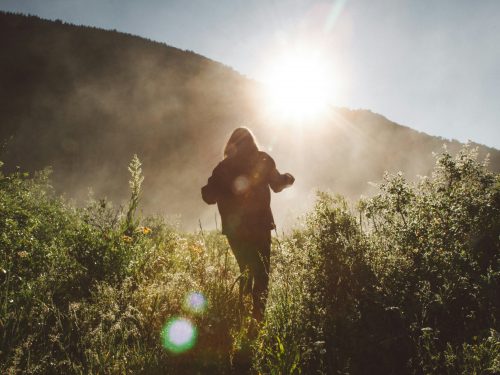
Things to do in Karratha for the adventurous
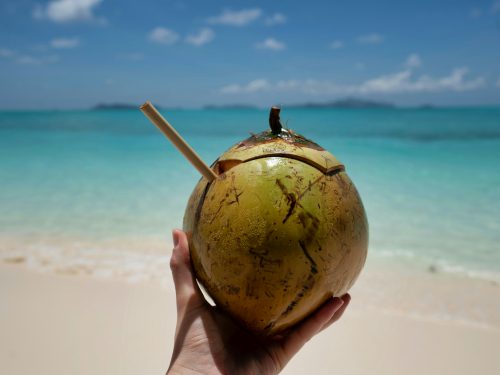

Diving the Dampier Archipelago
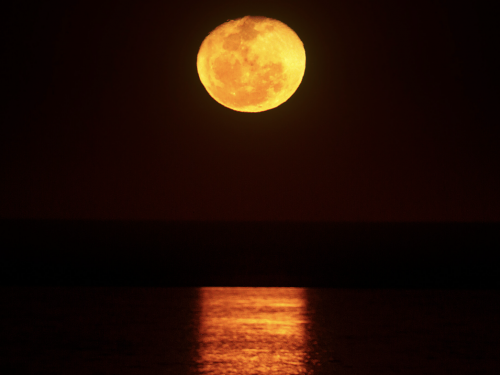
Where to see the Staircase to the Moon in Karratha
Welcome to Karratha International Hotel | Class of license: LIQ-Hotel | License number: 6010027433 | Licensee: Ringthane Pty Ltd. Warning: Under the Liquor Control Act 1988, it is an offence: To sell or supply liquor to a person under the age of 18 years on licensed or regulated premises; or for a person under the age of 18 years to purchase, or attempt to purchase, liquor on licensed or regulated premises.

Karratha International Hotel Cnr Hillview & Millstream Road, Karratha, WA 6714 T: +08 9187 3333 | F: +08 9185 4472 Email: [email protected]
Join our Mailing List
* Required Field
Your browser is not supported for this experience. We recommend using Chrome, Firefox, Edge, or Safari.
- Tourism Industry
- Media & Film
- Privacy Statement
Plan Your Holiday To Australia’s North West
5 things to do in karratha.
Looking for a base while you explore the best the Pilbara has to offer? Karratha has you covered.
Located 240 kilometres south of Port Hedland , this coastal town has plenty of great places to stay, and amazing restaurants to sustain the exploring you’ll be doing while you’re here!

1. Petroglyphs at Burrup Peninsula
Murujuga National Park , located on the Burrup Peninsula is only a 35-kilometre drive from Karratha and is 100% a must-see if you’re in the area. Stunning wildflowers and wildlife are not the only thing that make this area special – the Burrup Peninsula is thought to house the largest concentration of petroglyphs (rock engravings) in the world. Estimated at about 40,000 years old, this ancient outdoor gallery depicts things such as human figures, birds, marine life, and extinct creatures that hold meaning to the Aboriginal people of the Pilbara. To understand the meaning behind these engravings on a deeper level, book a tour with Ngurrangga Tours or the Murujuga Rock Art Cultural Experience.

2. Yaburara Heritage Trail
Learn about the culture, lifestyle and history of the Yaburara people on this self-guided walking trail. The Yaburara Heritage Trail has options for people at any point in their fitness journey. Want something leisurely and short? There are plenty of shorter trails that loop back to the starting point that would be perfect! If you enjoy pairing history with vigorous exercise, try out the full point-to-point trail to get your blood pumping.
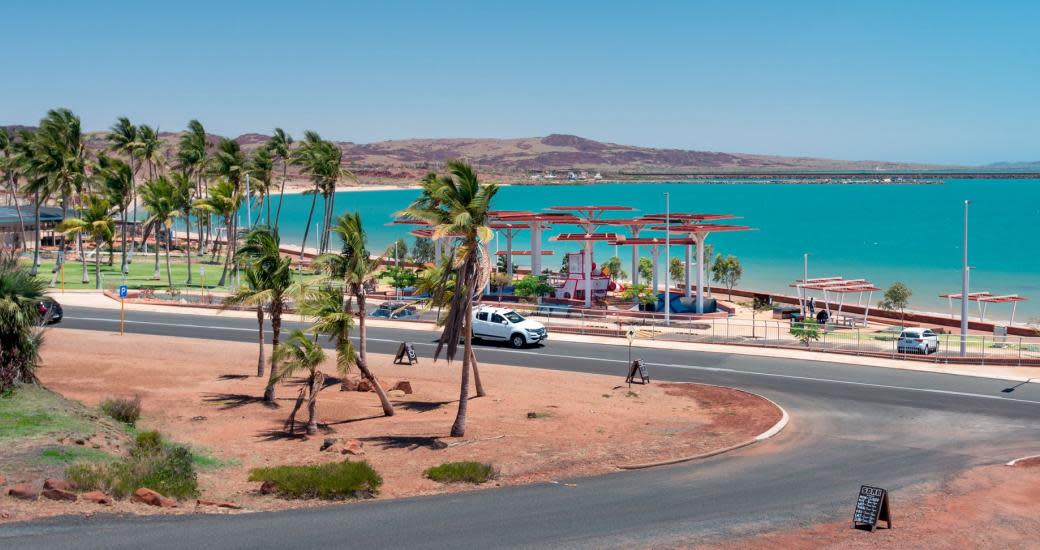
3. Dampier for a Day
Take a drive 20 kilometres west of Karratha and spend a day exploring the sights around Dampier . As the home of Red Dog (yes– from the movie), no trip to Dampier is complete without spending some of your time roaming the Red Dog Trail . Discover some of Red Dog’s favourite places around town while answering questions and completing the quest set out before you. Drop your boat in the water or get on a tour and explore the 42 islands and islets that make up the Dampier Archipelago . White beaches, coral reefs and sponge gardens await your exploration! Enjoy some delicious food at Soak Café while you’re in town and soak in the views from the café overlooking the beach and Hampton Harbour.
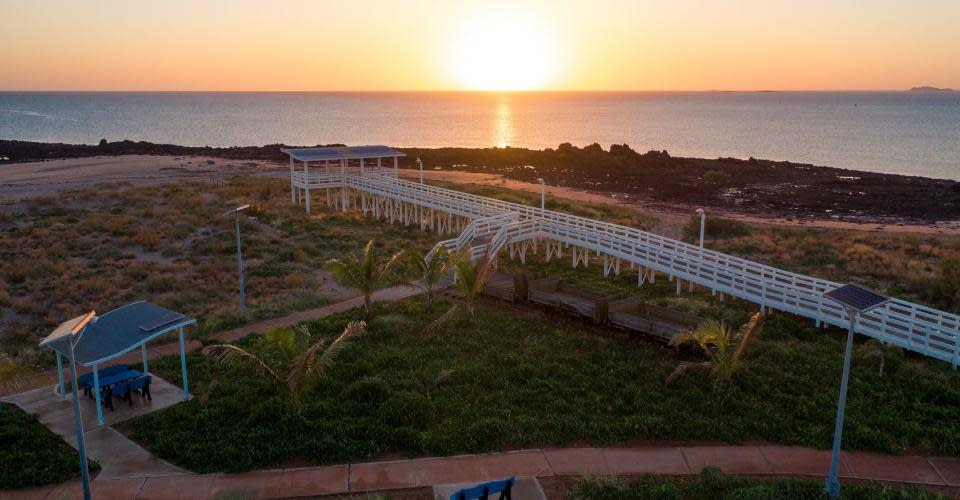
4. Point Samson Peninsula
If beautiful beaches and restored heritage buildings are your thing, we’re pointing you in the direction of Point Samson . Discover the stunning beaches of the peninsula like John’s Creek and Honeymoon Cove. Spend a day relaxing around the coastal village at your leisure and check out the heritage trail to learn about the town’s interesting past.
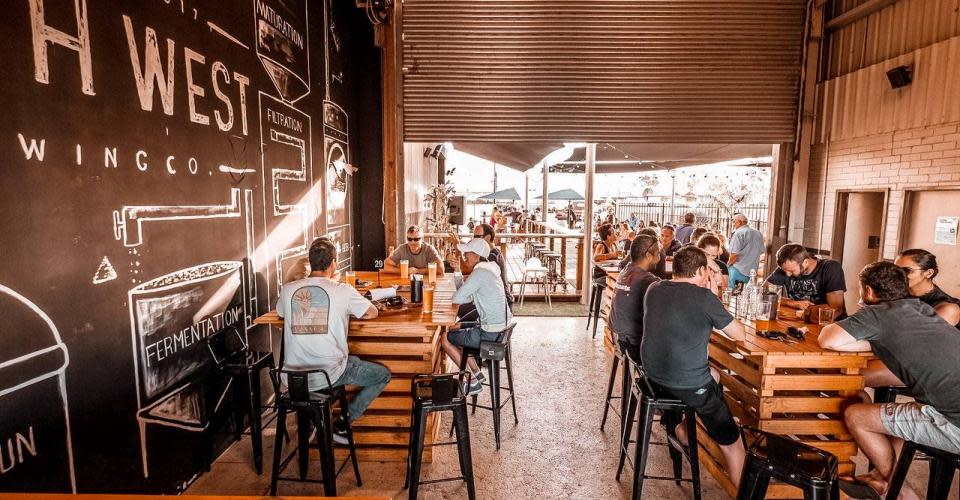
5. North West Brewing Company
You’re sure to have worked up a thirst during your exploration of Karratha and its surrounds, so Karratha’s own North West Brewing Company is one place you definitely can’t miss! Open 7 days a week, it’s the perfect place to relax, enjoy a locally brewed craft beer, and dig into some delicious food. The brewing company regularly hosts events and live music, creating a beautiful ambience to unwind from your Pilbara adventure.
For more to see and do in Karratha and the surrounding towns Roebourne and Cossack , stop in at Karratha’s Visitor Centre and make sure you make the most of your Pilbara holiday!
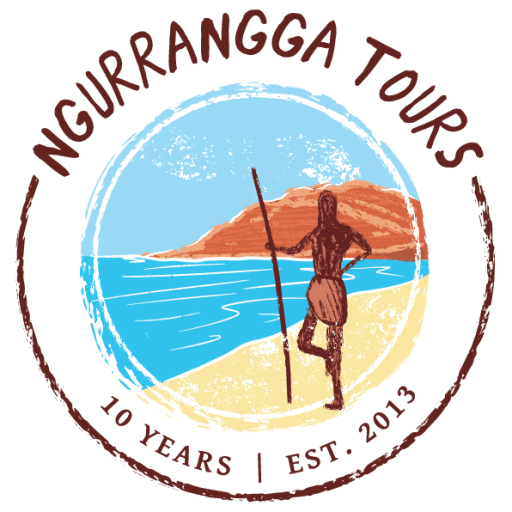
Tours and experiences
2024 Season update:
Dear Guests,
This season, we are offering a limited number of public tours due to a decrease in tourist numbers in the area. We are innovating with technologies so that we can offer self-guided experiences , allowing us to better meet demand- stay tuned for updates on our social media platforms. We also recommend visiting the Karratha Visitor Centre to assist you in discovering our wonderful part of the world.
We are still committed to collaborating with local schools, businesses, and organizations to share and embed knowledge locally. For private or group bookings, please visit our Groups booking page.
Below, you will find a list of the public tours available this season.
Kind Regards,
The Ngurrangga Tours Team
Short (gubija) experiences
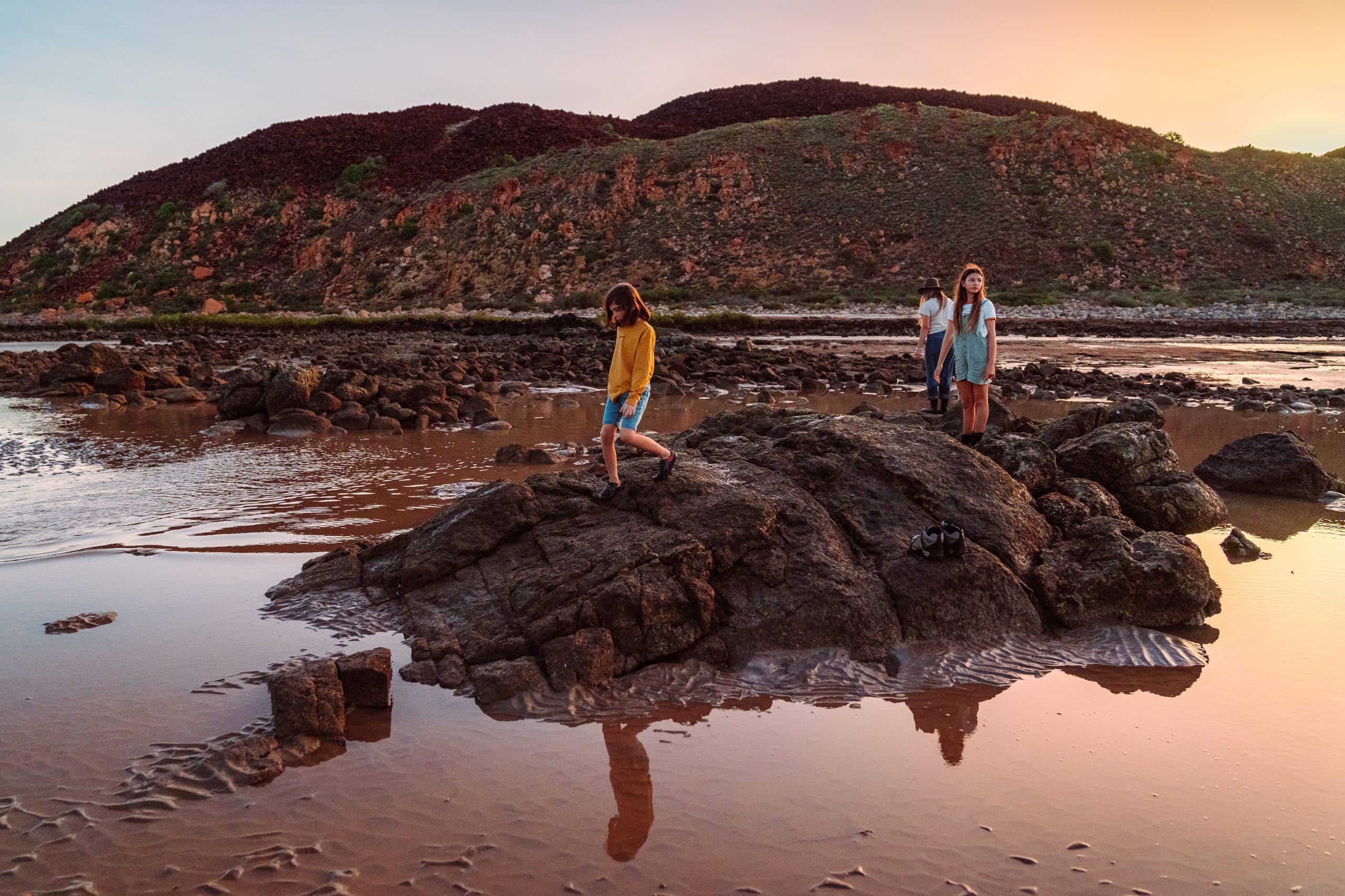
Long (wanarra) trips and campouts
Please note that guests are required to bring adequate water, sun protection and their own transportation to meeting locations. however, we are happy to provide assistance at an extra cost which can be added at check-out..
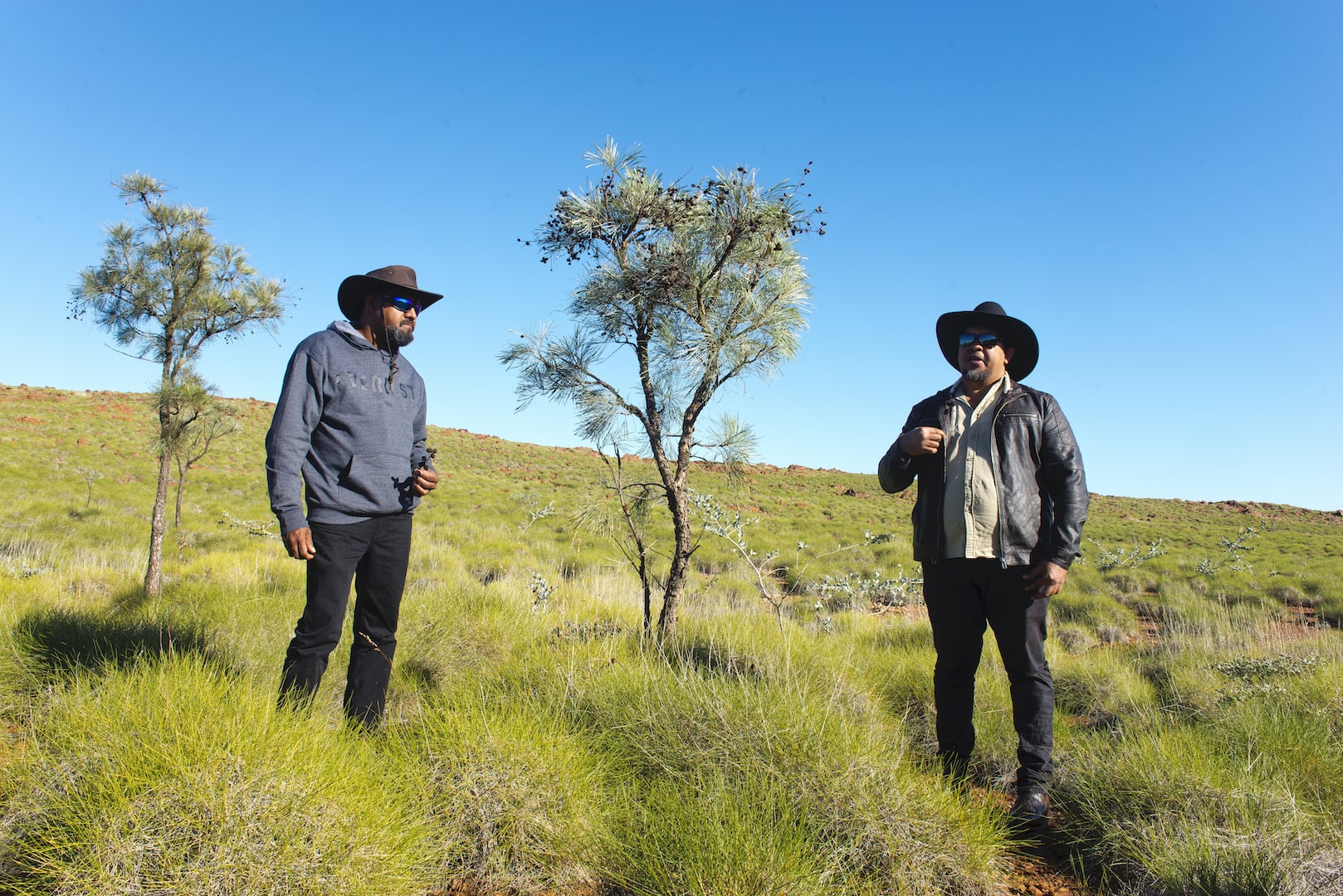

Home » Travel Guides » Australia » 15 Best Things to Do in Karratha (Australia)
15 Best Things to Do in Karratha (Australia)
The main city and economic heart of Western Australia ‘s remote Pilbara region is Karratha, founded as recently as 1968. Although the area has European history going back another century, Karratha is the product of an iron ore mining boom that began a few decades ago.
Karratha’s landscapes are almost Martian for the reddish tint lent by those iron deposits.
Some of the oldest rocks on earth, dating back 2.5 billion years, litter the coastline and the craggy isles of the Dampier Archipelago offshore.
Minutes from Karratha is the Dampier Rock Art Precinct, comprising the world’s largest and most important collection of Aboriginal petroglyphs, dating back as far as the last Ice Age and depicting animal species that are now extinct.
1. Staircase to the Moon

Along the Pilbara and Kimberley coastline a beautiful natural spectacle occurs on nights with a full moon between March and November.
Staircase to the Moon is an optical illusion when the moon reflects on exposed mudflats at low tide.
The result is a long and wide shaft of light with little ridges resembling a staircase reaching up to the moon.
People plan whole evenings around this phenomenon, packing a picnic and deckchair.
The best spot to witness Staircase to the Moon around Karratha is Hearson’s Cove, which we’ll cover a little later.
2. Burrup Peninsula

As if to add to the mystery of the long arm of land extending out on the west side of Nickol Bay it was named after one Henry Wood Burrup who was murdered in unexplained circumstances at Roebourne’s Union Bank in 1885. The Burrup Peninsula is a harsh environment of massive rock formations, cliffs and steep, sparsely vegetated slopes.
The land was inhabited for millennia by the Jaburara people, who left behind the largest, oldest and most significant collections of rock art in the world.
There are innumerable sites spread throughout the Murujuga National Park at the peninsula’s north end, as well as across the islands of the Dampier Archipelago offshore.
For a complete panorama of the peninsula you can reach a lookout close to the junction of the Burrup and Dampier Roads.
The peninsula’s industry is also hard to miss: Gas is drilled at an offshore platform 130km north of the town of Dampier, before being treated here onshore and then piped 1,450km to the south of the state.
3. Millstream-Chichester National Park

Cut south from the nearby town of Roebourne and before long you’ll come to a stunning tropical oasis against the peaks of the Chichester Range.
The biodiverse Millstream-Chichester National Park has rock-lined pools, verdant water holes fed by underground springs, rivers lined with lush vegetation and rugged gorges that demand to be explored.
One inspiring sight is the Fortesque River, and the massive ferns on its banks contrasting with the stark outback scenery.
The presence of ample and permanent water in the park gives rise to lots of birdlife, and more than 120 species have been recorded here.
The Yindjibarndi people are the traditional custodians of this land, and now take decisions about its conservation, and work in the park as rangers and contractors.
You can learn about their culture and the park’s pastoralist history at the Millstream Homestead Visitor Centre, set in a building from 1919. To survey the park you can climb the 367-metre Mount Herbert for awesome panoramas of the Chichester Range and plain below.
4. Dampier Archipelago

Constellated around the Burrup Peninsula is a group of 42 islands, more than half of which are protected by reserves.
As with the mainland, the archipelago’s underlying rocks are among the oldest on the planet, formed over 2,400 million years ago.
Despite the industrial activity on shore, the islands are a natural paradise.
Loggerhead, flatback, green and hawksbill turtles nest on the beaches, as well as more than 25 bird species, among them bridled and fairy terns.
No fewer than six species of marine mammal have been counted in the islands’ waters, from dugongs to bottlenose dolphins and migrating humpbacks between July and September.
Hire a boat and spend a day or two snorkelling, swimming, lying back on beaches or hiking in places where few people have set foot.
5. Yaburara Heritage Trail

You’ll come away a little wiser about Karratha and its pre-European history after taking this self-guided walk dedicated to the Yaburara Aboriginal Tribe.
The 3.5-kilometre trail begins close to the Karratha Tourism & Visitor Centre, taking you along the rugged ridge that traces the town and serves as a natural balcony for the coastal plain around Nickol Bay.
There are several panoramic lookouts on the route, furnished with informative signs outlining the landmarks on the horizon.
There’s also lots of insight about the many thousands of Aboriginal petroglyphs littered across the region and dating back millennia.
The trail covers some tough terrain so it’s best to be prepared and head out early in the day.
6. Hearson’s Cove

In a recess on the bay side of the Burrup Peninsula is a sublime sandy beach, withdrawn between two powerful headlands.
When the tide is up Hearson’s Cove is the best place in the region for a swim, and at low tide the sea practically disappears and you can walk across the mud flats for hundreds of metres.
When the conditions are right between March and November, this is one of the top places in the Pilbara to watch Staircase to the Moon, and there’s profuse wildlife all around, from the turtles in the coral cay to eagles and kangaroos in the rugged bush.
Hearson’s Cove played a part in the area’s early European settlement, as the landing site of F.T. Gregory’s Northwest Exploring Expedition in 1861.
7. Red Earth Arts Precinct

Karratha has recently gained a state-of-the-art venue for culture, functions and community events.
It’s a captivating building, in tune with the geology, history and physical contours of the landscape, and in 2018 the project received the Master Builders Bankwest Excellence in Construction award.
There’s a cutting edge public library, an auditorium holding 478, two sleek foyer spaces which can put on exhibitions of Aboriginal art and two smaller studio theatres.
For large-scale events you’ve got the amphitheatre beside the main building and with a capacity of 2,000, and then there’s the spectacular “Shelf” a rooftop terrace with sensational views over Karratha.
8. Roebourne

A Gold Rush settlement, Roebourne was the first gazetted town in the North West, but in 1872 was razed by a cyclone.
The famed Public Works Department architect George Temple-Poole (1856-1934) was called in for the rebuild in the 1880s, which has left the town with some grand bluestone buildings.
Among them are the courthouse, Shire Offices, Holy Trinity Church, post office and this unusual old gaol.
Able to house 40 prisoners, this complex is designed on an octagonal plan, so that one gaoler could be in charge of all four wings.
Now the Roebourne Tourist Centre is housed in the gaol’s imposing old entrance.
9. Karratha Tourism & Visitor Centre

There’s much to experience around Karratha, but getting to places isn’t always easy.
This makes the local visitor centre a vital resource, offering a free booking facility for trips to the Millstream-Chichester National Park, the Dampier Archipelago and the extremely remote Karijini National Park, which we’ll talk about below.
You can also grab leaflets and maps, and get invaluable firsthand advice from the centre’s staff.
Essential in winter and spring is a handy calendar for Staircase to the Moon, detailing the moonrise and tide times so you won’t miss a thing.
10. Karijini National Park

For those hungering for real adventure, Karratha is the closest large settlement to Western Australia’s second-largest national park.
Karijini National Park lies five hours inland, and protects more than six million square kilometres of mountainous terrain.
Here arid peaks loom above a plateau riddled with gorges.
People make the journey to hike in these rocky corridors, walled with mesmerising sedimentary formations and featuring waterfalls, slot canyons and dreamlike water holes that demand a refreshing swim.
Karijini National Park is remote enough that a 4WD tour is the most sensible way in, and this can be arranged at the Karratha Tourism & Visitor Centre.
11. Cossack

At the mouth of the Harding River, about 20 minutes east of Karratha there’s an enthralling ghost town with a few bluestone buildings still standing despite 150 years of cyclones.
In the 1870s Cossack the North West’s main shipping port, and a lively base for the gold and pearling industries.
There was even a Chinatown here because of the high number of Chinese and Japanese people working in pearling.
But by the mid-1880s those pearl banks were depleted and the industry moved on.
Now you can trace Cossack’s swift rise and fall on a five-kilometre heritage trail (walk or drive), showing off the region’s oldest architecture at eight fully restored buildings and fields of eerie ruins.
12. Deep Gorge

We’ve mentioned that the Burrup Peninsula and Dampier Archipelago are rich with Aboriginal rock art sites, and one of the best concentrations can be found close to Hearson’s Cove for a combined day out.
The trail leads you along a dry creek and into an impressive gorge strewn with granite boulders and growing lone kurrajong trees.
Take your time to study the many petroglyphs, a great deal of which depict the thylacine (Tasmanian tiger), extinct now for almost a century.
Walking the gorge you’ll also get a feel for the way of life of the Jaburara Tribe: Shell middens are long-surviving testament to their diet, while the granite boulders would offer shelter from the elements and the creek, now mostly dry, would have been a reliable water source.
13. Tank Hill Lookout

You can see right across Karratha and out into Nickol Bay from this lookout at the beginning of the Yaburara Heritage Trail.
The name for this vantage point is no mystery as there’s a pair of massive water tanks posted on this sparsely vegetated ridge.
You can get here easily from the visitor centre car park, and can escape the sun with the help of the covered picnic tables.
On a clear day you’ll b able to see right along the Burrup Peninsula to the Dampier islands guarding the entrance to the bay.
14. Karratha Country Club

This far-off corner of Western Australia is surely one of the world’s most remote places for a round of golf.
But there’s an 18-hole course in front of the bay, just north of Karratha, with surprisingly good facilities including club and buggy hire, a small pro shop and a restaurant.
In 2020 green fees were $24 for 9 holes and $35 for 18, while the course is dotted with native vegetation and gives you occasional vistas of the bay.
After a round you can retreat for a cold drink at the restaurant’s terrace, which has a gorgeous view late in the day.

With coral reefs inhabited by kaleidoscopic tropical fish, turtles and rays, the Pilbara’s waters are ripe for a diving or snorkelling expedition.
Whatever your level, the Karratha-based Pilbara Dive and Tours will help you do just that, offering a whole menu of experiences like shore diving, snorkel dives and dive trips to the Dampier Archipelago.
You can also use this accredited centre if you’re working towards PADI certification for anything from open water to rescue diver, as well as a host of specialty courses.
And if you’ve been out of the water for a while you can take a ReActivate course with Pilbara Dive, completing your theory component online before you arrive.
15 Best Things to Do in Karratha (Australia):
- Staircase to the Moon
- Burrup Peninsula
- Millstream-Chichester National Park
- Dampier Archipelago
- Yaburara Heritage Trail
- Hearson's Cove
- Red Earth Arts Precinct
- Karratha Tourism & Visitor Centre
- Karijini National Park
- Tank Hill Lookout
- Karratha Country Club

Item added to your cart
Ngurrangga tours.
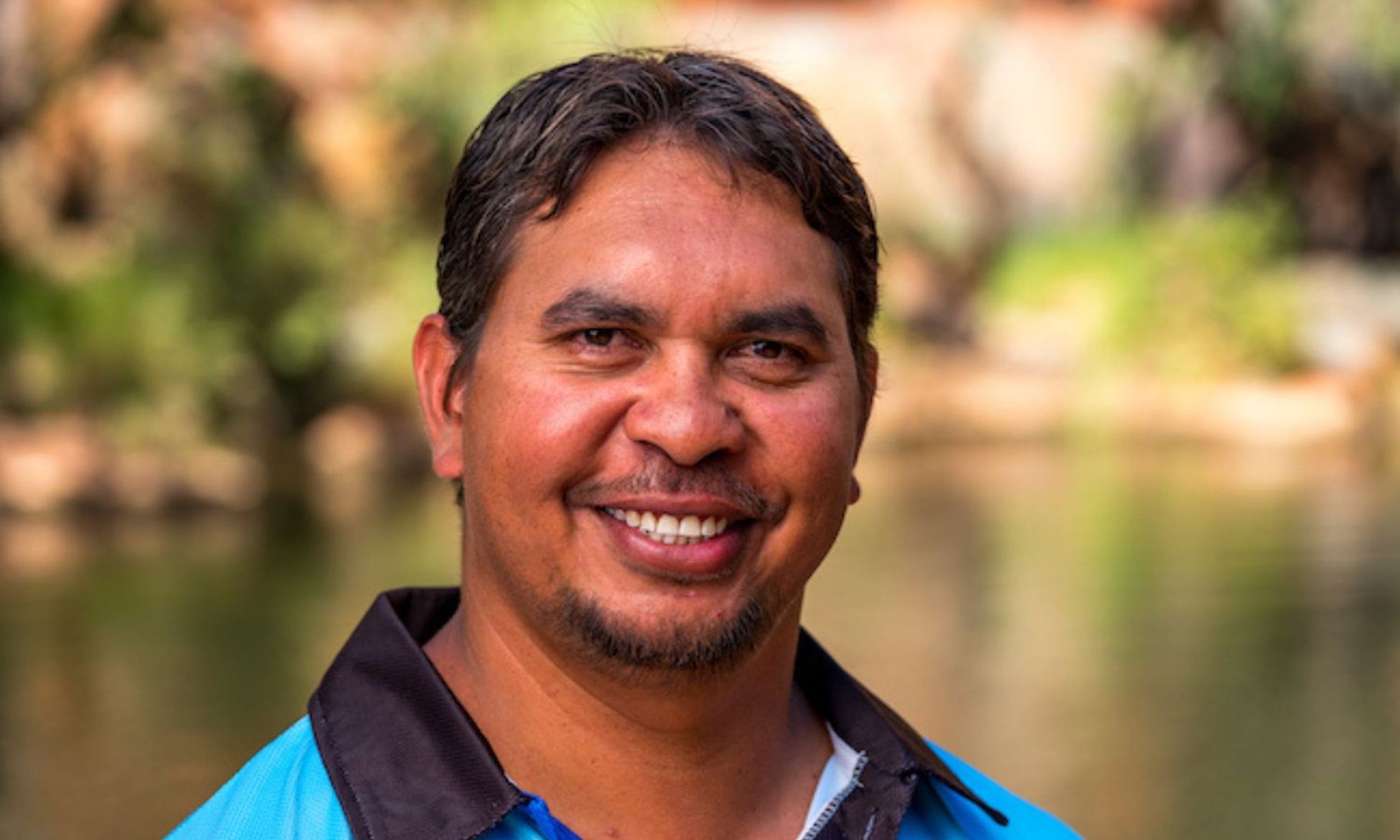
Ngurrangga Tours allows you to experience the Pilbara through the eyes of a traditional owner. You will see some of the most beautiful landscapes and hear the stories of this region.
Ngurrangga Tours is a fully Aboriginal owned and operated tourism company delivering tours to the coastal and inland areas within the Ngarluma and Yindjibarndi traditional country.
Clinton Walker started Ngurrangga Tours to educate and immerse people in the ways of his culture and history so that they could understand more about Pilbara Aboriginal culture and country.
Clinton is a descendant of the Ngarluma and Yindjibarndi people, who are the Traditional Owners of the coastal and inland areas of the West Pilbara region encompassing areas such as the City of Karratha, Dampier Archipelago, Murujuga National Park and Millstream-Chichester National Park. Clinton has spent his entire life learning from his Elder’s and family about the traditional ways of his people including speaking Ngarluma and Yindjibarndi languages, he has also been initiated in his people’s Aboriginal Law Ceremony (Birdarra) and is an active member in his cultural responsibilities of looking after his ngurra (country).
Clinton is passionate about raising the profile of the Burrup Peninsula located in Murujuga National Park. It is one of Australia’s most significant heritage sites and an important cultural place for Aboriginal people. The Burrup Peninsula is on the National Heritage register and is home to up to a million Aboriginal rock carvings, some dating back 40,000 years. Despite this, it is relatively unknown worldwide and even in Australia.
Ngurrangga Tours mostly operates from Karratha and offers visitors a unique experience of the Pilbara through the eyes of a traditional owner.
Guests are given the opportunity to learn about bush foods and medicines, explore stunning locations, view and understand ancient rock art in the world’s largest outdoor rock art gallery, hear traditional stories and listen to traditional songs sung using the wirra (boomerang).
Language Groups: Ngarluma/Yindjibarndi Skin Group: Burungu

Rock Art Tour, Murujuga National Park
Rock art tour, yaburrara trail, barrimirndi day tour, 4wd tag along tour, staircase to the moon, bush tucker tour of hearson cove.
- Choosing a selection results in a full page refresh.
- Opens in a new window.

Karratha, WA
Modern service town and largest centre in the Pilbara
Karratha is a modern town which was created to provide accommodation and services for the employees of Hamersley Iron, Robe River Associates, the Dampier Salt Company and the workers on the North West Shelf Gas and Petroleum project. It has now grown to be the largest township in the Pilbara - it is nearly twice the size of Port Hedland and accounts for about 40% of the region's total population. Be warned: it is a town which is still driven by the high paying mining industry and consequently everything is about 50% more expensive that it would be in a non-mining town. In mid-2017 it was common for accommodation in three star motels to be more than $200 a night and meals, particularly the steaks beloved by miners, could be as much as $65.
Karratha is located on Nickol Bay 1525 km north of Perth via Highway 1.
Origin of Name
Karratha takes its name from the Karratha Station which was established in 1866 by Dr Baynton and Harry Whittal-Venn. The word 'Karratha' is believed to have meant either "good country" or "soft earth" in the language of the local Aborigines.
Things to See and Do
Karratha Visitor Centre The sensible starting place for any exploration of the Pilbara is the excellent Karratha Visitor Centre which is located on De Witt Road which runs south of Dampier Road near the town centre. It is open from April to September from 8.30 am - 5.00 pm on weekdays and 9.00 am - 2.00 pm on weekends. From October to March it is open from 9.00 am - 4.00 pm weekdays and from 10.00 am - 1.00 pm on weekends. It has excellent maps of the area and a wide range of useful brochures.
Karratha Resource Tour There is one tour from the Karratha Visitor Centre which covers most of the industrial attractions in the area. It starts at 8.30 am at Karratha Visitor Centre, moves to the Roebourne Visitor Centre where a video of the iron ore operations is shown, then moves out to Cape Lambert to see the port operations before heading back to Wickham and across to Cossack for lunch. It is only run during the winter months. For more information and bookings tel: (08) 9144 4600 or check out http://www.karrathavisitorcentre.com.au .
St Paul's Catholic Church A landmark in the town because of its impressive 37 metre high copper coated spire, St Paul's Catholic Church is located on Welcome Road. The church has 24 glass windows at the base of the spire and a seating capacity of 280 people. It was officially opened in 1982 although it had been operating since 1978.
Walking in the Area There are five interlocking trails (all accessible from the Karratha Visitors Centre) which are detailed - complete with a map - on the Yaburara Heritage Trail (download at http://trailswa.com.au/media/files/documents/SR9902_YABURARA_FOLDOUT_MAP_v6.pdf )
Yaburara Heritage Trail The brochure explains: "The Yaburara Heritage Trail is a 3.5 km, grade 4 walk highlighting the Karratha district’s natural history and cultural heritage and in particular the heritage of the traditional owners of this land, the Ngarluma people, and their neighbours the Yaburara people. It covers rugged country with some steep climbs and descents and features a number of Aboriginal sites including rock engravings and artefact scatters. The trail commences from the water tanks overlooking the Karratha town centre and access is via the information bay on Karratha Road, next to the Karratha Visitor Centre. There are also two short branch trails and three longer branch trails - a secondary trail around the base of the hills, recreational trail following the ridge top and a nature trail along two major valleys. Allow two to three hours to enjoy the full trail at a leisurely pace." The trails that all connect with the Yaburara Trail are: 1. Point to Point Trail which runs from the Visitor Centre to the Karratha Leisureplex and includes sections of the other four trails 2. Rotary Trail which focuses on Aboriginal artefacts and includes a scatter (pieces of stone used for engraving and instruments are simply left lying around); a Talu site - a site for special ceremonies where mythical creatures live; Aboriginal engravings - a ridge with excellent petroglyphs; a lookout with views over Karratha and a place where grinding stones - used for grinding seeds - can be seen. 3. Short Loop Trail which includes the Salt Shakers Lookout with views over Karratha; ineresting displays of flora; an extensive display of petroglyphs; and a valley with bloodwood and coolibah trees.
Other Attractions in the Area
North West Shelf Project Visitors Centre The North West Shelf Project Visitors Centre is located on Burrup Peninsula Road approximately 20 km from Karratha. It features viewing areas overlooking the Karratha Gas Plant and is open Monday to Friday, tel: (08) 9158 8292. Admission is free. As well as an excellent view over the works, the Visitors Centre has models and a theatrette where a film of the project is screened. The centre looks across at huge domes which hold liquefied natural gas which is shipped to Asia in LNG carriers.
Tours of the Dampier Archipelago Helispirit Helicopter Tours There is a helicopter company - Helispirit (check out http://www.helispirit.com.au/dampier-archipelago-and-karratha-helicopter-flights ) which offers helicopter flights out of Karratha. There is a relatively short flights which includes Nickol Bay and Hearson's Cove; another up the Burrup Peninsula and another which goes out across the Dampier Peninsula Islands. All flights can include an Aboriginal rock art tour organised by Ngurrangga Tours - this is an ideal way to experience the petroglyphs on the Burrup Peninsula. For more information tel: 1800 841 611 or check out http://www.helispirit.com.au/dampier-archipelago-and-karratha-helicopter-flights .
Ngurrangga Tours The Aboriginal-led tours of the area around Karratha are highly recommended. They are run by Clinton Walker who, as the website explains, "started Ngurrangga Tours to educate and immerse people in the ways of his culture and history so that they could understand more about Pilbara Aboriginal culture and country. Ngurrangga Tours mostly operates from Karratha and offers visitors a unique experience of the Pilbara through the eyes of a traditional owner. Guests are given the opportunity to learn about bush foods and medicines, explore stunning locations, view and understand ancient rock art in the world's largest outdoor rock art gallery, hear traditional stories and listen to traditional songs sung using the wirra (boomerang)." There are a number of tours including a bush tucker tour, a day tour to the Millstream-Chichester National Park and a three day tour. In the immediate area is the Rock Art Tour to the Burrup Peninsula which is explained as "the highest concentration of rock art in the world and rediscover the petroglyphs (rock art) created by the Yaburrara (Northern Ngarluma) people. The rock art has been dated back to before the ice age ended and is approx. over 40,000 years old and there is up to 1 million rock art images scattered across the entire Burrup Peninsula and Dampier Archipelago." For more information, and online booking, check out http://www.ngurrangga.com.au/tours.html .
Background to the North West Shelf Project This is an abridged and condensed version of the North West Shelf Project brochure. For a full version check out http://www.woodside.com.au/Our-Business/Producing/Documents/NWSV%20Corporate%20Brochure.PDF . “Representing an investment of more than A$34 billion, the North West Shelf Project is Australia’s largest oil and gas development and currently accounts for about one third of Australia’s oil and gas production. The North West Shelf (NWS) Project is a joint venture between six major international companies. “It is one of the world’s largest liquefied natural gas (LNG) producers, supplying oil and gas to Australian and international markets from huge offshore gas and condensate fields in the Carnarvon Basin off the north-west coast of Australia. “The NWS Project is Western Australia’s largest single producer of pipeline gas and this world-class project has been and continues to be a major contributor to the Australian economy. “The NWS Project has delivered more than 4000 LNG cargoes since 1989. The NWS Project is operated by Woodside. The six participants in the project are: • BHP Billiton Petroleum, BP Developments, Chevron Australia, Japan Australia LNG (MIMI), Shell Australia, Woodside Energy. The China National Offshore Oil Corporation is also a participant in the NWS Project but does not have an interest in its infrastructure. “The NWS Project started in the 1970s with the discovery of vast quantities of natural gas and condensate off the north-west coast of Australia. In 1980, the first major works commenced on this landmark project including the condensate load out jetty, the North Rankin A offshore platform and a 135 kilometre subsea pipeline to shore. “Pipeline gas production began in 1984 followed by the first shipment to Japan in 1989. “The principal NWS Project oil and gas fields are located approximately 125 kilometres north-west of Karratha, Western Australia in water depths ranging between 80 and 131 metres, covering a total area of 3,134 square kilometres. The Perseus field is an important longterm gas supply for the NWS Project and represents about one third of current gas resources. Other producing fields include North Rankin, Goodwyn, Angel, Searipple, Cossack, Wanaea, Lambert and Hermes. Undeveloped gas reserves include Wilcox, Dockrell, Lambert Deep, Pemberton, Lady Nora, Keast, Dixon and Gaea.”
Dampier Archipelago Dampier and the Dampier Archipelago lie to north west of Karratha. The archipelago is a collection of 42 uninhabited islands, rocks and keys which feature unspoiled sandy beaches, excellent diving, fishing and snorkelling opportunities and offshore coral reefs. Ranging in size from one hectare to 3290 ha (Enderby). All lie within a 45-km radius of Dampier. Twenty five of the islands are conservation reserves. Loggerhead, Green, Hawksbill and Flatback turtles nest there and the islands are also home to 26 bird species, including a couple of tern species which use them for nesting purposes.Bottlenosed dolphins and dugongs live in the offshore waters and humpback whales can be seen from July to September. The Dampier Archipelago covers a land area of around 400 square kilometres. The Archipelago was formed 6-8000 years ago when rising sea levels flooded what were once coastal plains. The underlying rocks are amongst the oldest on earth, formed in the Archaean period more than 2400 million years ago. This is a sacred place for the Ngarda-Ngarlie people who explain that ancestral beings created the land during the Dreamtime, and the spirits of Ngkurr, Bardi and Gardi continue to live in the area. The Burrup Peninsula is 27 km long and four km wide. Many important native plants, animals and habitats are found in the area. For more information check out http://karratha.wa.gov.au/Assets/Documents/Document%20Centre/LGHI/13._Dampier_Archipeligo_including_Burrup_Peninsula.pdf .
Historic Sites Aboriginal Engravings are found on many of the Islands, and the best examples are found on Enderby and Rosemary. Some new engravings have been found on East and West Intercourse Island. Ruins on West Lewis are believed to be part of an old pastoral settlement, and there is a remainder of a whaling station to be found on Malus. It is believed to have been operating between 1870 and 1872.
Rock Engravings on Burrup Peninsula It has been estimated that there are around 10,000 indigenous rock engravings (some sources claim that it is as many as one million making it the largest rock art site in the world) on the Burrup Peninsula, which extends to the north-east of Dampier. The important viewing points for these petroglyphs on the Burrup Peninsula are all in the Murujuga National Park on the heritage listed Burrup Peninsula. There are two practical ways of inspecting the petroglyphs. • Take a guided tour (they can be arranged by contacting the Karratha Visitor Centre - and they need to be pre-booked) and have a local person point out and explain the significance of the rock art to the Yaburrara people. • Travel to Deep Gorge (it is easy to find - take the turn to Hearson Cove on the road between Karratha and Dampier) and within easy walking distance there are images of emus, kangaroos and a variety of unusual petroglyphs. There is a sheet of directions available from the Visitor Information Centre. According to the Ngarda-Ngarli people the engravings have a variety of purposes. Some depict ancestral beings or spirit figures, while others relate to sacred ceremonies and songs. But many are representations of the everyday life or events of the traditional ancestors. Engravings show humans (single people, pairs and groups); human activities like hunting and climbing; and animals such as fish, crab, turtles, sharks, lizards, goannas, snakes and kangaroos. Some images show animals no longer found in the area - like emus - and others that are extinct, like the thylacine or Tasmanian Tiger. Some images are so finely detailed animals can be identified right down to species level. Created by pecking, pounding, rubbing and scratching, the engravings provide a fascinating insight into the past.
The Flying Foam Massacre The sign explains: "Hereabouts in February 1868, a party of settlers from Roebourne shot and killed as many as 60 Yapurarra people in response to the killing of a European policeman in Nickol Bay. The incident has become known as the Flying Foam Massacre." The Flying Foam Massacre is one of Australia’s more brutal massacres of Aboriginal people. On the orders of the State Government’s resident Robert Sholl, police and white settlers were given permission to kill any Aboriginal person as retaliation for a police officer who was speared by the Yapurarra people. It has been estimated that up to 150 Yaburara men, women and children were killed between the months of February to May. The event is recalled in some detail on the Monument Australia website: "The Flying Foam Massacres were a series of confrontations between white settlers and Aboriginal people around Flying Foam Passage on Murujuga (Burrup Peninsula), between February and May 1868. Violence resulted in the deaths of unknown number of Jaburara (or Yaburara, Yapurarra ) people, with estimates ranging between 20 and 150 dead. The massacres followed the homicides on February 7, on the south west shore of Nickol Bay, of Police Constable William Griffis, an Aboriginal police assistant named Peter and a pearling worker named George Breem, by some Jaburara people as well as the disappearance of a pearling lugger captain, Henry Jermyn. Pearlers and pastoralists from the surrounding region, with the approval and support of the Government Resident in Roebourne, R. J. Sholl, organised two armed and mounted parties, which travelled overland and by sea respectively to Murujuga, the heartland of the Jaburara. The two parties moved towards each other in a pincer movement." For the specific location of the monument, which is in a particularly beautiful part of the Burrup Peninsula check with the Karratha Visitor Centre.
Staircase to the Moon at Hearson Cove Between March and October, on an average of three times a month, the remarkably beautiful natural phenomenon named "Staircase to the Moon" occurs off the coast. The phenomenon is created when a full moon shines on the exposed mudflats at very low tide. The result is an illusion which looks like stairs reaching to the moon. It can be observed at Onslow, Dampier, Point Samson, Hearson Cove, Cossack, Port Hedland and Broome. Check out http://www.visitbroome.com.au/discover/facts-figures/staircase-to-the-moon for dates and times.
Bird Watching The coast around Karratha is characterised by mangroves and mudflats. Particularly significant is Back Beach at Karratha where, when the tide is out, the mudflats are used by many waders. Further east mangrove trees fringe the coast. Behind the mangroves is an estuary of smaller mangroves and open mud and sand flats. Most of the common migratory waders can be seen foraging on the mudflats. White-bellied Sea Eagles, Brahminy Kites and Nankeen Kestrels can be seen practically every day as can be Great, Eastern Reef and Little Egrets. Little Corellas, often tarnished red by the iron ore in the dust, can also be seen all around Karratha.
Millstream Chichester National Park Located 148 km from Roebourne, 105 km from Karratha on the Warlu Road and 97 km from Pannawonica, the 240,000 ha Millstream Chichester National Park is a landscape of spinifex hills, escarpments and tree-lined watercourses. There is also the lush oasis of the Millstream wetlands and Fortescue River pools. The area forms part of the Yindjibarndi homeland and had been a pastoral station, Millstream Station, since 1865. It became a national park in 1970 and was expanded in 1982. The land around Millstream's water pool supports typical vegetation of the tropical north, such as palms, although introduced species such as date palms and cotton palms have spread out along Millstream Creek. From June to August the winter rains encourage the growth of colourful wildflowers. Black flying foxes, a range of birds and swarms of dragonflies and damselflies are also found around Millstream. Euros are found in the rocky areas and red kangaroos on the plains. When you visit the park first call at the Millstream Homestead Visitor Centre to obtain information on the park’s many features and learn about the interpretative walk trails. The visitor centre, which is normally unattended, has rooms dedicated to the Yindjibarndi people, the early settlers and the natural environment. It offers an important introduction to the park's attractions. There is an excellent, downloadable brochure - https://parks.dpaw.wa.gov.au/sites/default/files/downloads/parks/20140464_MillstreamChichesterNP_v4.pdf - which lists five Millstream Trails and five Chichester Range Trails with information about difficulty levels and attractions. The trails are: Millstream Trails * Homestead Walk - 750m – 30 minutes return – a path through the Millstream Wetlands with interpretative signs about the wetlands. * Warrungunha Trail - 8 km – 2.5 hours return – links the Millstream Homestead with Cliff Lookout and crosses areas of melaleuca woodland, hummock grassland and riverine woodland. * Red Roo Trail - 9 km one way – 3 hour walk - begins at Miliyanha Campground and ends at Deep Reach Pool. * Stargazers Link Trail to Deep Reach - 5 km return – a 500m track links Stargazers Campground to the Red Roo Trail. A further 2 km along the Red Roo Trail is Deep Reach. * Cliff top walk - 600m return, allow 20 minutes – a 300m cliff top walk links three vantage points from which you can view the Fortescue River and the distant Hamersley Ranges. This trail can be accessed by vehicles from Millstream Road.
Chichester Range Trails Python Pool - 100m – 20 minutes return - a trail along a dry creek bed to Python Pool which is a permanent freshwater plunge pool located at the base of a cliff in the escarpment. The water is suitable for swimming. McKenzie Spring - 4.5 km – 2.5 hour return – From the Mount Herbert car park to McKenzie Spring. The spring was once a watering hole for camel and bullock teams. Mount Herbert Summit - 600m – 25 minutes return – From the Mount Herbert car park to the base of Mount Herbert, and then to the top of the mountain for a panoramic view. Chichester Range Camel Trail - 8 km – 3 hours one way or 16 km – 6 hours return – the trail crosses the rugged basalt and sandstone terrain of the Chichester Range. It includes steep gradients, natural obstacles and consists of variable surfaces including loose rocks. Cameleers Trail - 4 km – 1.5 hours return – Follow the trail towards Python Pool and head up the hill. There are natural obstacles including washouts and the surface is loose and rocky. Take time to appreciate the work that went into its early construction. The Millstream Chichester National Park is situated in a remote area and travel on dirt roads is necessary to access the park. Road conditions change frequently especially in summer with rain. In the cooler months, the park is generally accessible by 2WD vehicles but it is necessary to contact the park office or the department’s Karratha office beforehand. Check out https://parks.dpaw.wa.gov.au/park/millstream-chichester for detailed information.
* Prior to the arrival of Europeans the district was home to the Ngarluma Aborigines for over 25,000 years.
* On 21 August, 1699 William Dampier reached the islands now known as the Dampier Archipelago.
* In 1818 Captain Phillip Parker King reached the Dampier Archipelago. He named the Intercourse Islands, Nickol Bay and the Lewis and Enderby Islands.
* In 1861 the explorer Francis Thomas Gregory reached Nickol Bay. He named Hearson's Cove, the Hamersley Ranges, Mount Samson, the Maitland and Fortescue Rivers.
* In 1866 Dr Baynton and Harry Whittal-Venn established Karratha Station. The station continued to operate under Baynton and Whittal-Venn until 1879.
* The district of Nickol Bay was gazetted in 1871.
* The Commonwealth embargo on the export of iron ore was lifted in 1960.
* In 1963 a causeway was built connecting Dampier to the mainland.
* The town was specifically constructed in 1965 as a port and processing centre to meet the needs of the Hamersley Iron mining operations at Tom Price and Paraburdoo.
* In 1966 Hamersley Iron constructed a sealed airport at Dampier.
* By 1968 Dampier had outgrown its original plan and the new town of Karratha was established.
* The modern town of Karratha was planned and constructed in 1968-9 as a joint State government - Hamersley Iron project to meet the expanding accommodation needs of the mining company.
* Karratha's first residents arrived in 1971.
* Karratha became the administrative centre for the Shire of Roebourne in 1975.
* The area known as Pegs Creek was settled in 1976.
* The St Mary Magdalene Anglican Church was consecrated in 1977.
* In 1979 Dampier Peninsula was renamed the Burrup Peninsula.
* Millars Well was developed in 1980.
* Nickol was settled in 1981.
* St Paul's Catholic Church was consecrated in 1982.
* In 2012 Woodside Pluto Gas Plant was opened on the Burrup Peninsula.
Visitor Information
Karratha Visitor Centre, Lot 4548, De Witt Road, tel: (08) 9144 4600. It is open from April to September from 8.30 am - 5.00 pm on weekdays and 9.00 am - 2.00 pm on weekends. From October to March it is open from 9.00 am - 4.00 pm weekdays and from 10.00 am - 1.00 pm on weekends.
Useful Websites
Karratha's official website can be found at http://www.karrathavisitorcentre.com.au .
Got something to add?
Have we missed something or got a top tip for this town? Have your say below.
You can use these tags: <a href="" title=""> <abbr title=""> <acronym title=""> <b> <blockquote cite=""> <cite> <code> <del datetime=""> <em> <i> <q cite=""> <s> <strike> <strong>
- +61 1300 763 188 or 0417 244 600

Karijini National Park Tours from Karratha

Karijini National Park Tours from Karratha, Broome, Port Hedland – includes 3 days in Karijini National Park to explore amazing gorges, walks & waterholes & optional Tom Price or Newman mine tour, 1 night Port Hedland, Karratha, & Marble Bar, 3 days / 2 nights in Karijini National Parks . 6 days/ 5 nights from Broome return to Broome or exit Port Hedland – Fully catered, comfy camping or accommodated.

Karijini National Park Tours

Share this:
- Click to print (Opens in new window)
- Click to email a link to a friend (Opens in new window)
- Click to share on LinkedIn (Opens in new window)
- Click to share on Twitter (Opens in new window)
- Click to share on Facebook (Opens in new window)
- Click to share on WhatsApp (Opens in new window)
- Click to share on Pinterest (Opens in new window)
- Click to share on Tumblr (Opens in new window)

IMAGES
COMMENTS
Entrance to National Park is on Hearsons Cove Road, Burrup Peninsula. Please contact Karratha Visitor Centre for all bookings. Email: [email protected]. Phone: (08) 9186 8055. Join traditional custodians on a 1.5 hour rock art & cultural experience at Deep Gorge in the Murujuga National Park. 30 minutes from Karratha.
Join the traditional custodians on a 1.5 hour rock art & cultural tour at Deep Gorge in the Murujuga National Park on the Burrup Peninsula 30 minutes from Karratha. top of page. Murujuga Rock Art & Cultural Experience. Tour Itinerary . Tours start at 8am in the car park of Nganjarli (previously known as Deep Gorge) ...
Contact Ngurrangga Tours - 42 Roe Street Roebourne WA 6718 Australia or telephone them on +61 (08) 9182 1777. Email: [email protected]. Or. Murujuga Rock Art Cultural Experience - Join the traditional custodians on a 1.5hour rock art tour and cultural experience at Deep Gorge in the Murujuga National Park on the Burrup Peninsula, 30 ...
Start your journey. from $100 per adult. Check Availability. Enquire now. Take a two-hour Aboriginal guided rock art tour along the Yaburrara Trail near Karratha in the Pilbara region of Western Australia. The Yaburrara Trail is in the hills behind the town of Karratha, the trail features red rocky outcrops, vast stretches of spinifex grass and ...
Sublime The rock art tour was the highlight of our stay in the Pilbara. Our guide, Clinton's nephew Elijah, was incredibly knowledgable and went above and beyond, accommodating a range of questions. ... We booked through the Karratha visitor centre and did the 8am tour. BOOK YOUR TOUR ONLINE. contact us. [email protected]. 0484 909 614 ...
Take a tour with an Aboriginal guide through the Murujuga National Park, which has the highest concentration of Aboriginal rock art in the world. Discover the petroglyphs created by the Yaburrara or Northern Ngarluma people. This ancient rock art dates back to before the ice age, which ended over 40,000 years ago.
The Murujuga National Park is the native land of five different Aboriginal groups and is renowned for its ancient Aboriginal rock art sites. On this tour, explore the park with an indigenous guide and enjoy a traditional welcome ceremony, admire rock art by the Ngarluma and Yindjibarndi people, and learn more about the region's Aboriginal heritage as you visit the Flying Foam Massacre Site ...
Murujuga Rock Art & Cultural Experience, historical sites and heritage locations attraction in Burrup, Karratha. Join Traditional Custodians on a 1.5hour rock art and cultural experience at Nganjarli (previously known as Deep Gorge). To the local Indigenous people, Murujuga is a sacred place where you will find the famed petroglyphs, ancient rock art of cultural significance.
Rock Art Tour - Yaburrara. AUD $100.00 . Duration: 2 Hours ... (rock art) created by the Yaburrara (Northern Ngarluma) people. The ridge is rich with petroglyphs dating back over 6,000 year. ... - Amazing vista views of Karratha and Nickol Bay. DISCLAIMER: We require a minimum of 4 bookings, or the cost thereof, for a booking to proceed. ...
Telephone. Visit website. The Karratha Tourism and Visitor Centre is the official home of incredible experiences in the City of Karratha. They're here to help visitors and the local community with information, advice and bookings and they specialise in curating unforgettable experiences with the tour operators who call their city home.
Take a guided tour with a traditional owner along a section of the Yaburrara Trail, in Karratha, to discover & learn about the ancient Aboriginal Rock Art. Book now and save!
At Murujuga, about 35km from Karratha in the Pilbara, there are millions of engraved rock art images. The Aboriginal custodians and WA Government hope the area will be listed as a World Heritage site with UNESCO for its cultural value. ... a Worrorra elder, offers rock art experiences such as a Rock Art by Air tour from Derby from April. The ...
Location. 42 Roe Street, Roebourne, Western Australia, 6718. Telephone. +61 484 909 614. 95 reviews. Book now. Visit website. Ngurrangga Tours is a fully Aboriginal-owned and operated tourism company that delivers tours to the coastal and inland areas around the Pilbara area, specifically within the Ngarluma and Yindjibarndi traditional country.
A fantastic Rock Art Tour in Karratha with Clinton on Thursday, August 20th 2020. I loved the songline stories and Clinton's interpretation of the ancient rock art. Wandering around and viewing these petroglyphs on our own, which I did consider doing during our three days in Karatha, would not have compared to this experience.
Karratha rock art tours The rock art scattered around Karratha and the Burrup Peninsula is some of the most abundant in Australia. The area is said to contain over one million petroglyphs, estimated to be up to 40,000 years old, serving as an enduring expression of the land's traditional custodians, the Ngarluma-Yindjibarndi, the Yaburara ...
To understand the meaning behind these engravings on a deeper level, book a tour with Ngurrangga Tours or the Murujuga Rock Art Cultural Experience. 2. Yaburara Heritage Trail. Learn about the culture, lifestyle and history of the Yaburara people on this self-guided walking trail.
However, we are happy to provide assistance at an extra cost which can be added at check-out. Learn more 4wd tagalong tours. read our faqs. Ngurrangga Tours, guided tours of the Pilbara, offers visitors a unique experience of the Pilbara through the eyes of a traditional owner. (08) 9182 1777.
A fantastic Rock Art Tour in Karratha with Clinton on Thursday, August 20th 2020. 15. HeliSpirit. 58. Helicopter Tours • Air Tours. Temporarily closed. By DCS0001. Brilliant helicopter flight with HeliSpirt Karratha out over the Burrup Peninsula, with pilot Jacob. 16. The Tav Sports Bar. 6. Bars & Clubs ...
Minutes from Karratha is the Dampier Rock Art Precinct, comprising the world's largest and most important collection of Aboriginal petroglyphs, dating back as far as the last Ice Age and depicting animal species that are now extinct. ... Karijini National Park is remote enough that a 4WD tour is the most sensible way in, and this can be ...
Ngurrangga Tours allows you to experience the Pilbara through the eyes of a traditional owner. You will see some of the most beautiful landscapes and hear the stories of this region.Ngurrangga Tours is a fully Aboriginal owned and operated tourism company delivering tours to the coastal and inland areas within the Ngarluma and Yindjibarndi traditional country.Clinton Walker started Ngurrangga ...
Karijini Pilbara & Karratha Tours from Broome 2024 - Karijini National Park, one of the highlights of this tour, is a place of dramatic gorges, crystal-clear rock pools, and cascading waterfalls. As you explore this natural wonderland, you'll be captivated by the vibrant red cliffs and the lush greenery that contrasts so beautifully against the azure skies.
Things to See and Do. Karratha Visitor Centre. The sensible starting place for any exploration of the Pilbara is the excellent Karratha Visitor Centre which is located on De Witt Road which runs south of Dampier Road near the town centre. It is open from April to September from 8.30 am - 5.00 pm on weekdays and 9.00 am - 2.00 pm on weekends.
Pilbara, Karijini National Park, Karratha & Marble Bar Tours from Broome or pickup in Port Hedland or Karratha (2nd day). Tour includes 3 days in Karijini National Park to explore amazing gorges, walks & waterholes & Tom Price or Whaleback Newman mine tour, nights in Port Hedland, Karratha, Marble Bar & Karijini Eco Retreat. Details - Tour commences from Broome Monday 8am.